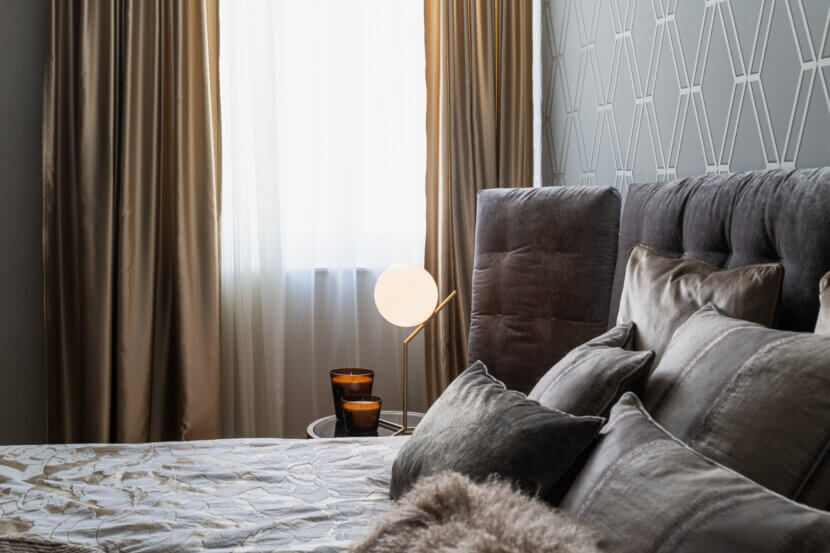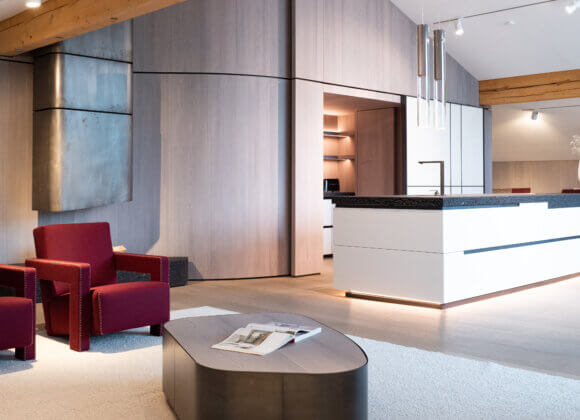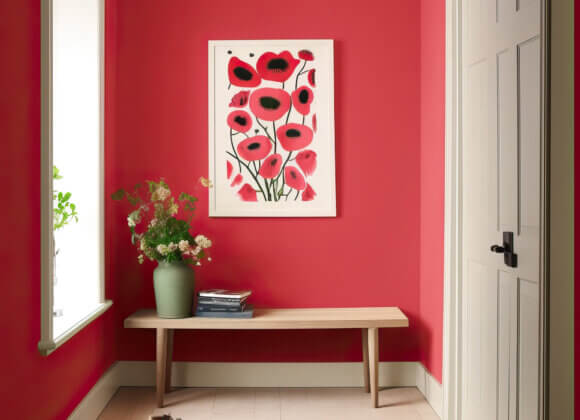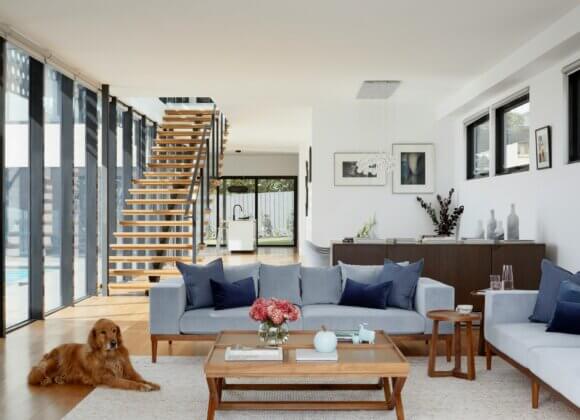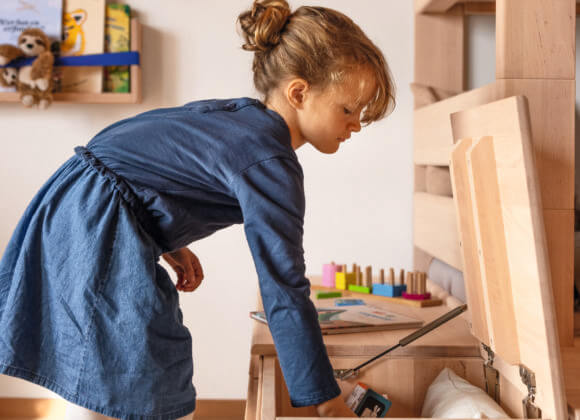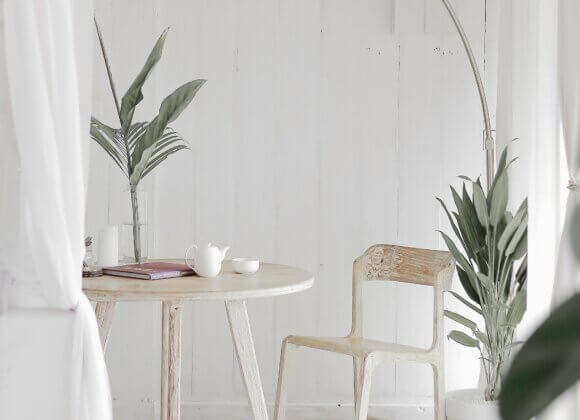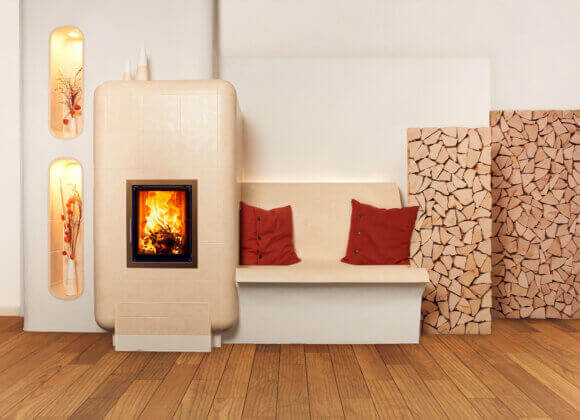Furnishing a guest room is an art that goes far beyond simply placing furniture. Perfectly designed, it combines aesthetics with functionality and creates an inviting atmosphere in which visitors can feel at home.
Johanna Bruckmüller-Knopf, interior designer and junior manager at “Bruckmüller Wohnen” in Wels, knows that there are no standard solutions in this area: “Instead, we sit down with our customers and discuss their ideas. We try to empathize with different characters, recognize individual living requirements and find the optimal solution.”
With the right furniture, colors and accessories, an often neglected room can become a place of relaxation and well-being for every guest. It is important to pay attention to the details and design the room in such a way that it is not only aesthetically pleasing, but also practical and inviting. In this way, the guest room becomes a highlight of the home, bringing joy to guests and hosts alike. And can fulfill many purposes in one room, as Johanna Bruckmüller-Knopf reveals in an interview.

What are the basic principles you take into account when designing a guest room?
What should never be missing in a guest room is a place for guests to sleep. From wall-mounted folding beds and pull-out sofas to single beds or double beds, the options here are vast and depend on the size of the room and the individual requirements of the hosts.
There is often a risk that a guest room will quickly mutate into a “storage room” when there are no guests. To counteract this, we try to create as much storage space as possible, for example with wardrobes or folding slatted frames that offer storage space under the sleeping surface.
Of course, there should also be enough space for guests’ luggage. If the room allows, we are also happy to integrate a small desk or at least a lounge chair with a side table where guests can retreat during the day.
In your opinion, which color palettes are best suited for a guest room to create a welcoming atmosphere?
We recommend opting for neutral shades such as beige or gray. Beige tones have a relaxing effect on the mind and symbolize comfort and confidence – important qualities for feeling at ease outside your own four walls.
Which materials and textiles do you prefer? And why are they particularly suitable?
We mainly use natural materials such as cotton and linen for upholstery and curtains, as they create a pleasant atmosphere and are easy to clean. For storage furniture, we prefer natural materials such as wood, either varnished or natural. However, it should not look too smooth or cold in order to create a homely atmosphere.
Which pieces of furniture are essential and why?
In addition to the bed, which can vary depending on the size of the room and requirements, storage space is essential. Whether sideboards, chests of drawers or wardrobes – the choice depends on the space available. A small desk can also be a valuable addition, as it can be used as a storage area or retreat and the guest room can be converted into a home office if required.
How can you ensure that the guest room doesn’t become a storage room?
Unfortunately, that happens – and to be honest, I’ve experienced it in my private life too (laughs). To avoid this, the right storage furniture is essential. A well thought-out interior layout of cupboards can help to store household utensils such as vacuum cleaners neatly when they are not in use.
What role do lighting and accessories play in designing a functional yet aesthetically pleasing guest room?
This is a very important point that is often given too little attention. Home textiles such as curtains, carpets, bedspreads and decorative cushions as well as home accessories such as scented candles make a significant contribution to the coziness of a room. Wallpaper is also a great way to spice up rooms. Choosing the right lighting is just as important. In addition to basic lighting, we like to use atmospheric light from floor or wall lamps to create an atmospheric ambience.
Could you give some tips on how to create a comfortable and stylish guest room even in a small space?
Smaller guest rooms are particularly suitable for fold-out wall beds or pull-out sofas that can be transformed into a high-quality double bed. Wallpaper and mirrors can help to visually enlarge the room and make it feel cozy.
How do you integrate modern technologies without compromising on comfort?
There are elegant solutions for discreetly integrating technology. For example, a television can be hidden in a closet. One particularly stylish solution is the “Caadre” from Italian manufacturer Fiam, which looks like a wall mirror and transforms into a TV the next moment.
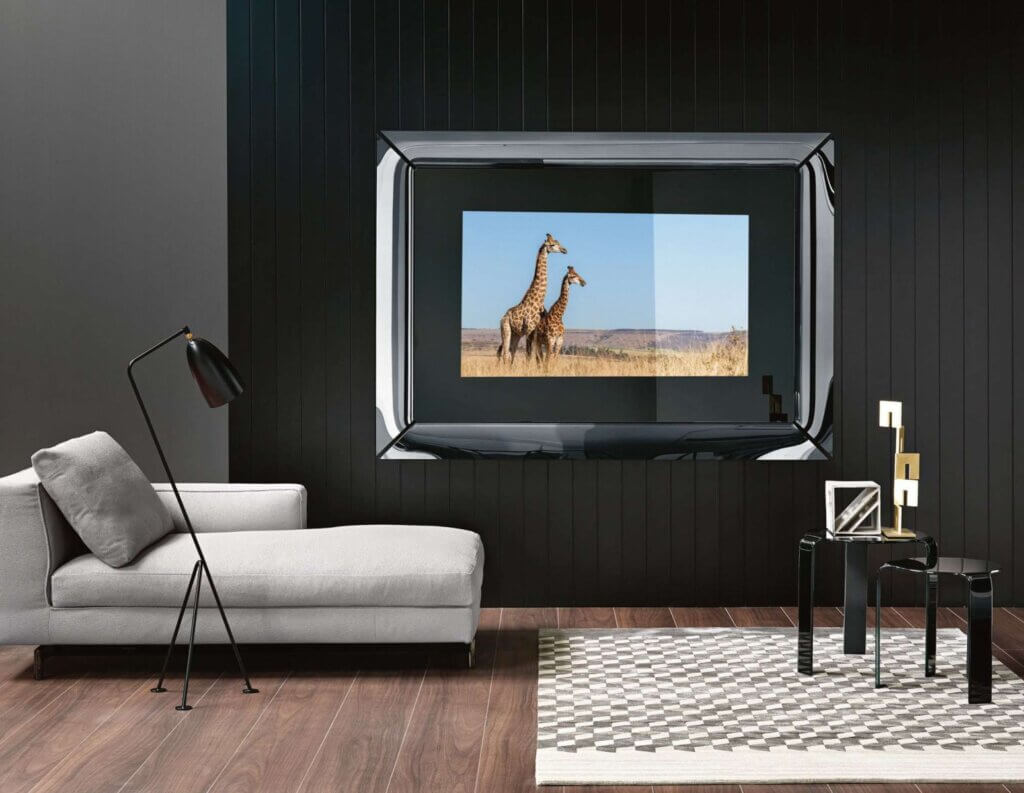
Which trends or developments in interior design are particularly relevant for guest rooms and which would you recommend?
As the guest room often remains unused, a multifunctional design is the ideal solution. The home office trend has increased due to the pandemic and we are seeing a growing demand for flexible spaces. By integrating a desk, the guest room can be used as a workspace if required. Here, it is important to create sufficient storage space for work utensils that can be stowed away quickly when needed. The foldable “Tama” secretary from Gallotti&Radice is an example of a piece of furniture that can simply be folded up and used as a sideboard when work is done.
A perfectly furnished guest room is therefore more than just a place to sleep. It is a room that creates an atmosphere in which guests feel completely at ease thanks to its well thought-out design, high-quality materials and modern technologies. With the right concepts, a room can be created that is both functional and aesthetically pleasing and also offers the hosts a wide range of possible uses.
Related posts:
Wall paint basics: Which colors suit your home?


